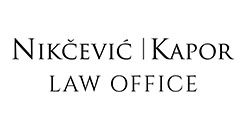Serbia’s 2010 Anti-Mobbing Act prescribes the procedure for fighting workplace harassment in a detailed manner. Employers are obliged to familiarize all staff members with the anti-mobbing procedure by providing them with an info sheet before they commence work.
A victim of horizontal (peer-against-peer) mobbing can file a lawsuit against his/her employer only if mandatory internal mediation fails to result in an agreement with the harasser. In this mediation, the employer, the victim, and the harasser consensually appoint a mediator, whose role is to propose a solution for the situation. The mediator cannot impose a resolution.
For victims of vertical mobbing (i.e., harassment by a superior), mediation is optional, and they may immediately choose to file a lawsuit against the employer, which can recover from the harasser any damages it is ultimately required to pay the victim.
However, victims keen on preserving anonymity are unlikely to choose one of the paths prescribed by the Anti-Mobbing Act i.e., to initiate mediation or file a lawsuit. Instead, such victims can alert the management about the harassment in other ways, such as through the internal whistleblowing channel that every employer is obliged to implement, or via an employee satisfaction survey.
Anonymous reporting through one of these channels is usually resorted to where there are multiple victims of the same mobbing act or in an environment where employees feel insufficiently protected from potential retaliation. Some victims do not necessarily want to sue for mobbing but instead want the employer to remove the harasser from the work environment. Also, witnesses to harassment who are not themselves victims may want to fight harassment by filing a report to the employer.
If an employee files a harassment complaint through an internal whistleblowing channel, the employer is obliged to investigate the allegations in accordance with its internal whistleblowing bylaw, which can entail substantial paperwork. As a minimum, the internal whistleblowing officer is required to prepare a report on the actions the employer undertook following the receipt of the complaint and propose measures for remedying the situation to management.
As part of its general statutory duty to protect employees from harassment, employers are obliged to investigate any allegations of harassment, even if they are made in other ways than through the internal whistleblowing channel.
If the mediation fails but there is reasonable doubt that harassment occurred, the employer has the duty to initiate disciplinary proceedings against the employee. If the employee is found liable for a breach of work duty or discipline at the workplace, the employer can choose among five different measures, depending on the severity of harassment and other circumstances of the case.
As a first option, the employer may dismiss the harasser, in a procedure which can last anywhere from eight days to about two weeks. The employee is entitled to a dismissal warning and a time to respond. The employer may suspend the harasser pending the dismissal procedure, but not for more than three months. During the suspension period, the employee is entitled to a partial salary compensation equal to one fourth of his base salary (one third if he has a family to support).
As a second option, the employer can permanently transfer the harasser to another work location and thus separate him from the victim.
The remaining options include: suspension from four to 30 working days without salary compensation; a monetary penalty in the amount of up to 20% of the employee’s monthly base salary, applicable for up to three months; and a warning to the harasser that he will be dismissed without notice if he commits a further act of harassment in the following six months.
By Ana Jankov, Partner, BDK Advokati
This Article was originally published in Issue 4.3 of the CEE Legal Matters Magazine. If you would like to receive a hard copy of the magazine, you can subscribe here.





























